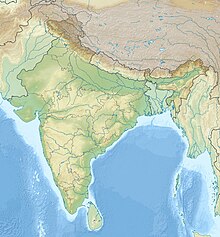Nashik Caves
| Pandavleni Caves/ Nasik Caves |
|
|---|---|

Pandavleni/ Nasik Caves, Cave No.17, built circa 120 CE.
|
|
| Location | Nashik, Maharashtra, India |
The Pandavleni caves, or Nasik caves (also sometimes known as Pandu Lena, Pandu Caves or Trirashmi Leni, Leni being a Marathi word for caves), are a group of 24 caves carved between the 1st century BCE and the 3nd century CE, though additional sculptures were added up to about the 6th century, reflecting changes in Buddhist devotional practices. They are a significant group of early examples of Indian rock-cut architecture initially representing the so-called Hinayana tradition. Most of the caves are viharas except for Cave 18 which is a chaitya of the 1st century BCE. The style of some of the elaborate pillars or columns, for example in caves 3 and 10, is an important example of the development of the form. The location of the caves is a holy Buddhist site and is located about 8 km south of the center of Nashik (or Nasik), Maharashtra, India.
Their name has nothing to do with the characters Pandavas, characters in the Mahabharata epic.
The caves, known as Trirashmi Buddhist Caves (erroneously known as Pandav Caves) were carved out from the 1st century BCE until the 3rd century CE, with later additions of sculptures. They were paid for by local Buddhist royalty, merchants and local people for the Buddhist monks. The name is derived from the word "Tiranhu" which is inscribed in the Caves. It means "rays of sunlight" which is quite obvious referring to the rays of sunlight emerging from behind the Caves as seen from the village. These caves were carved and donated by various kings that ruled Nashik - The Satavahanas, The Nahapanas, The Abhirs. The caves lodge idols of Buddha and Bodhisattva. Some caves are intricately connected by stone-cut ladders that join them to the other caves. Steps lead to the caves from the bottom of the hill. The peak of the Trirashmi Caves is also accessible by trekking of about 20 mins but the path is well built with steps.
These caves are one of the oldest caves of Maharashtra. Some of the caves are large and contain numerous chambers - these rock-cut caves served as a viharas or monasteries for the disciples to meet and hear sermons. They contain interesting sculptures. One of the vihara caves is older and finer in sculptural detail and is thought to be nearly as old as the Karla Cave near Lonavala. Another cave (cave No. 18) is a chaitya and is similar in age to that at the Karla Caves and has a particularly elaborate facade. Chaityas are used for chanting and meditation.
...
Wikipedia

